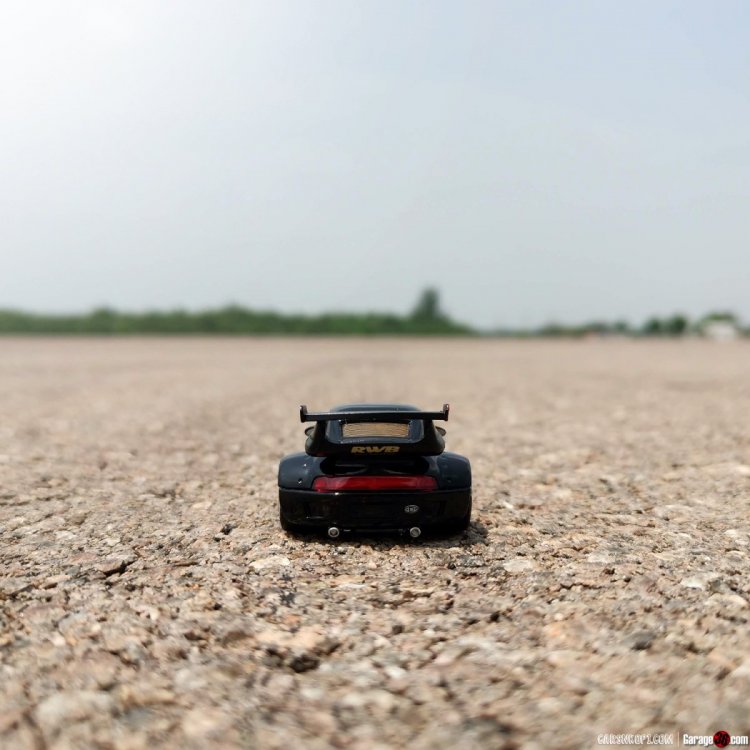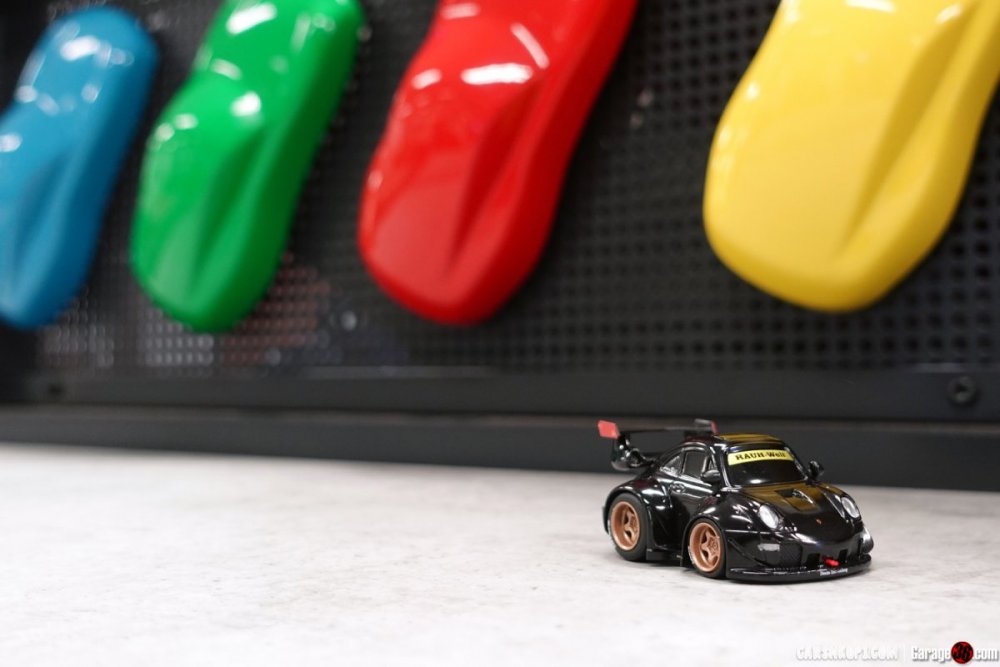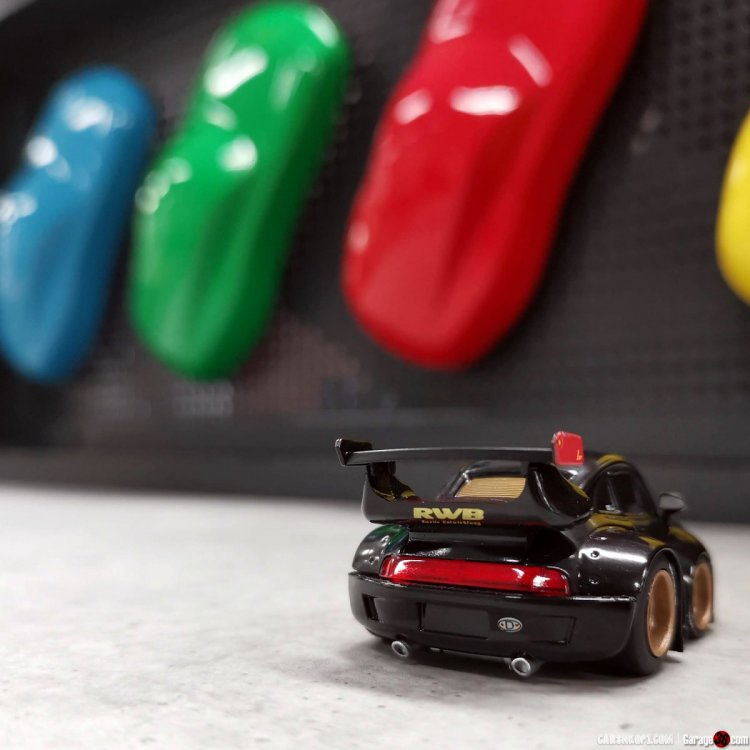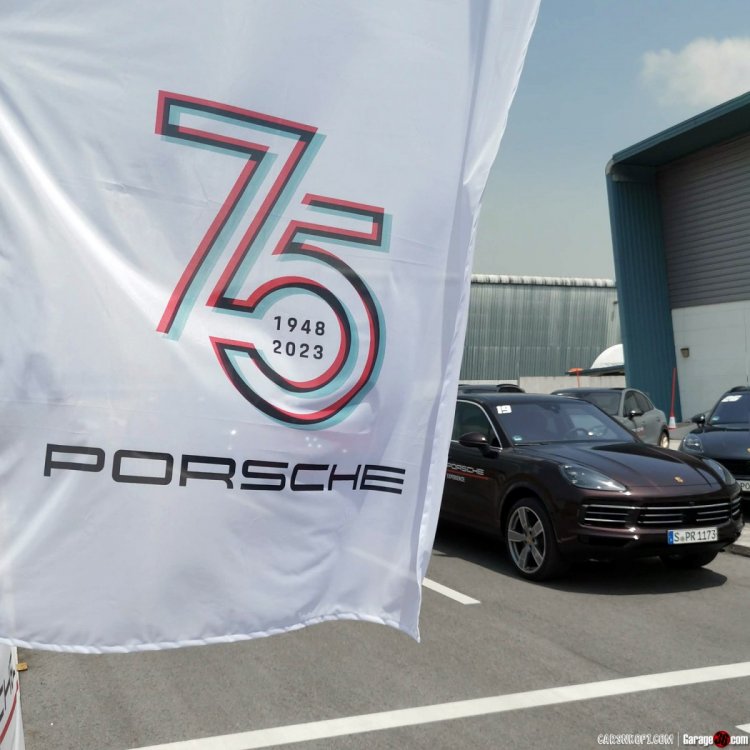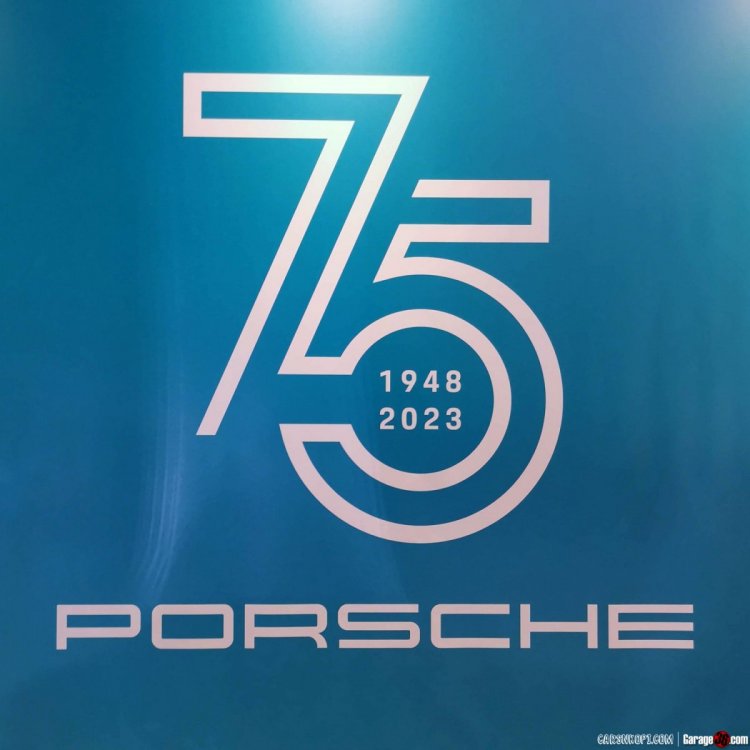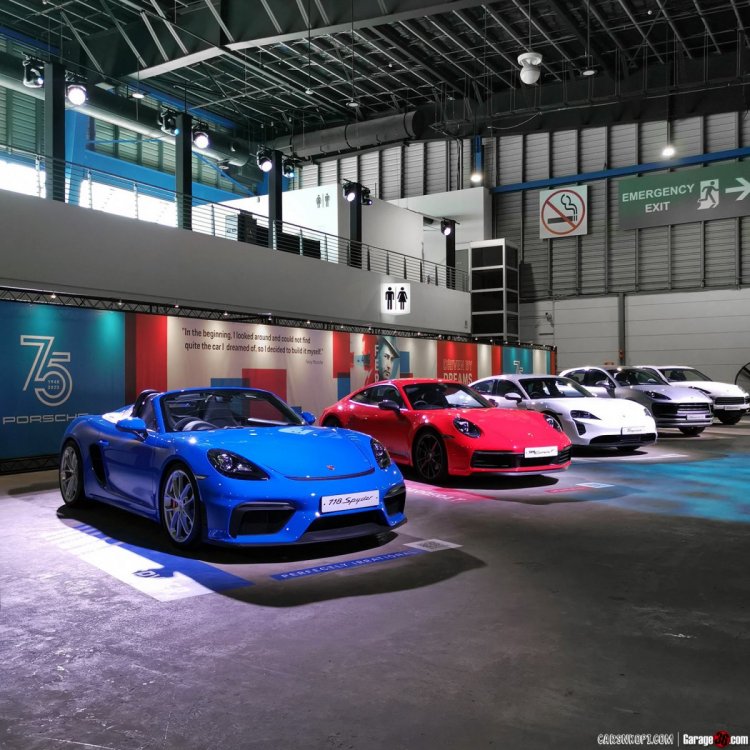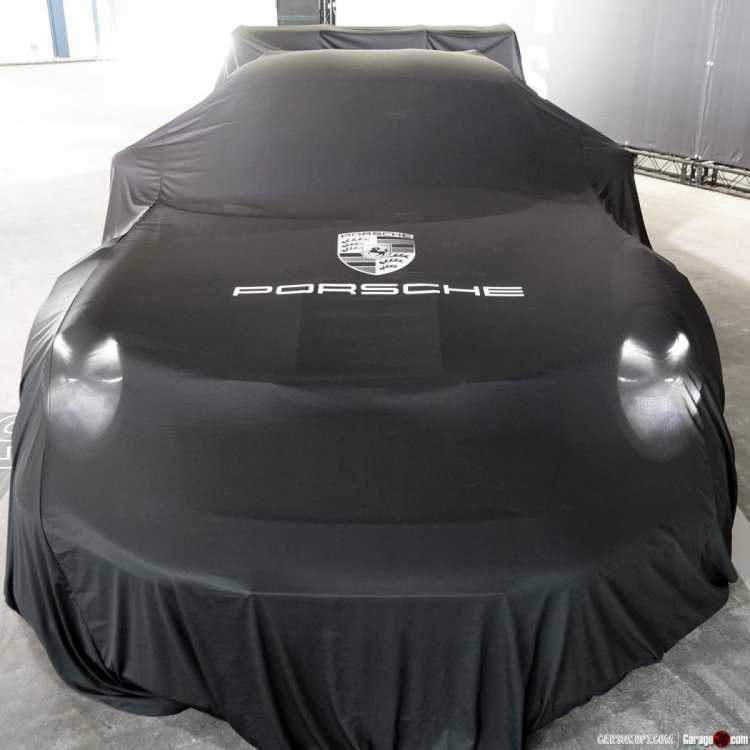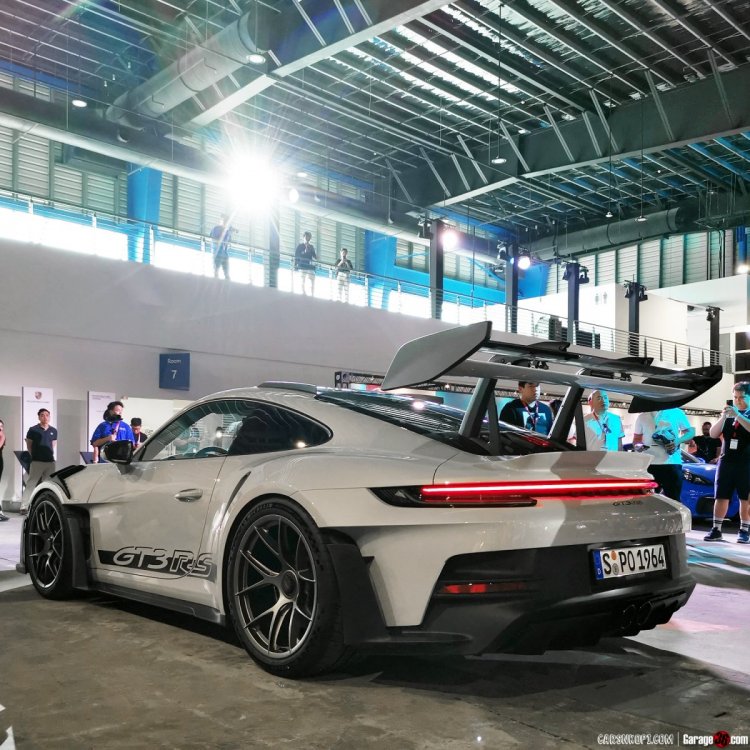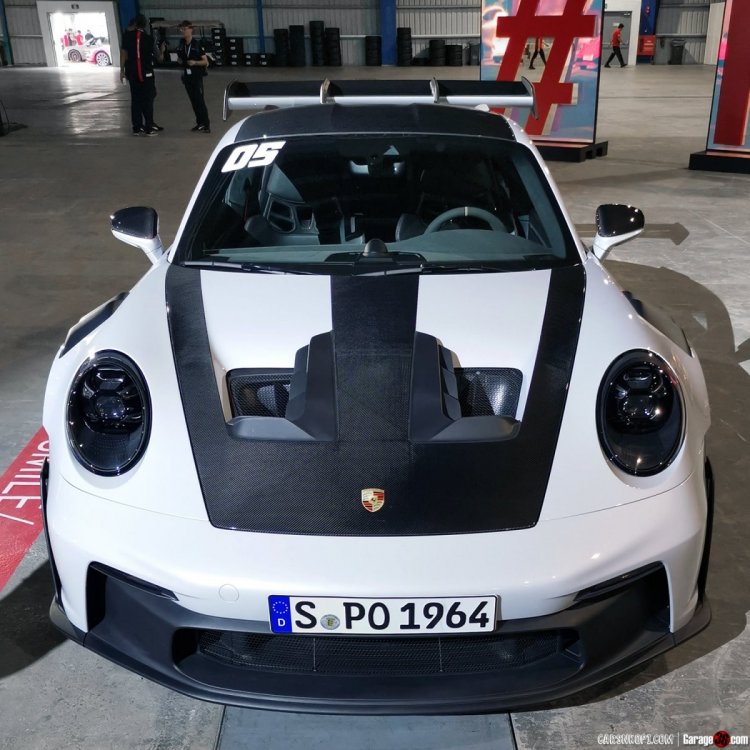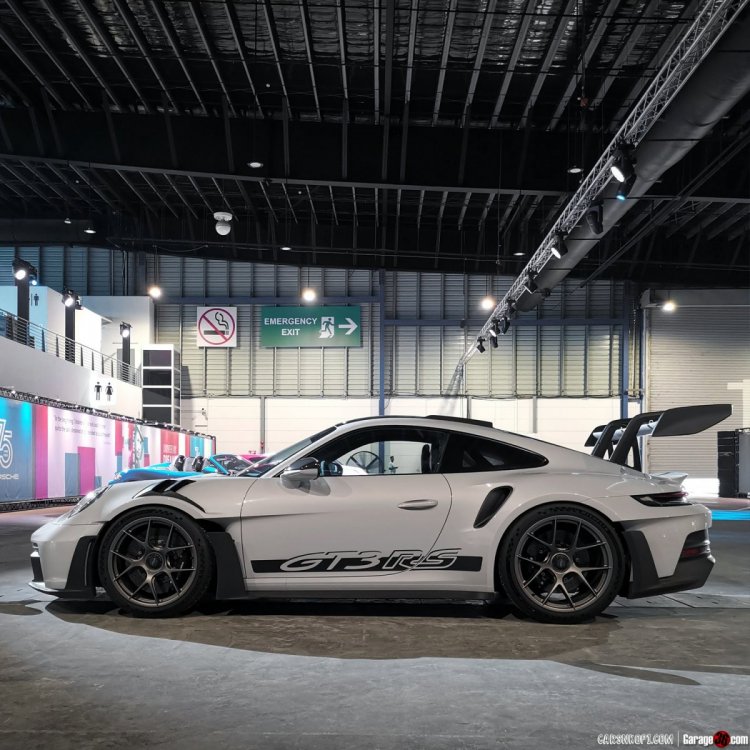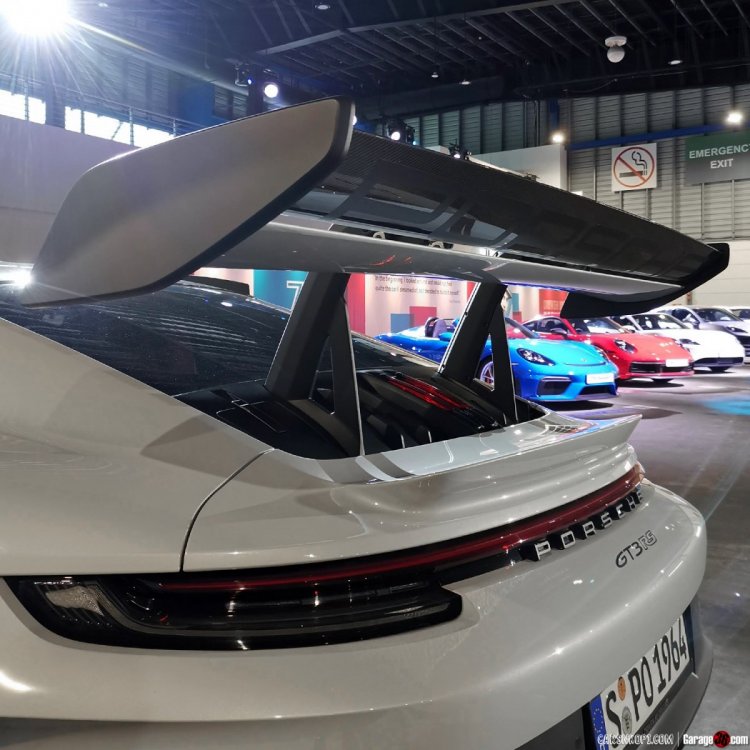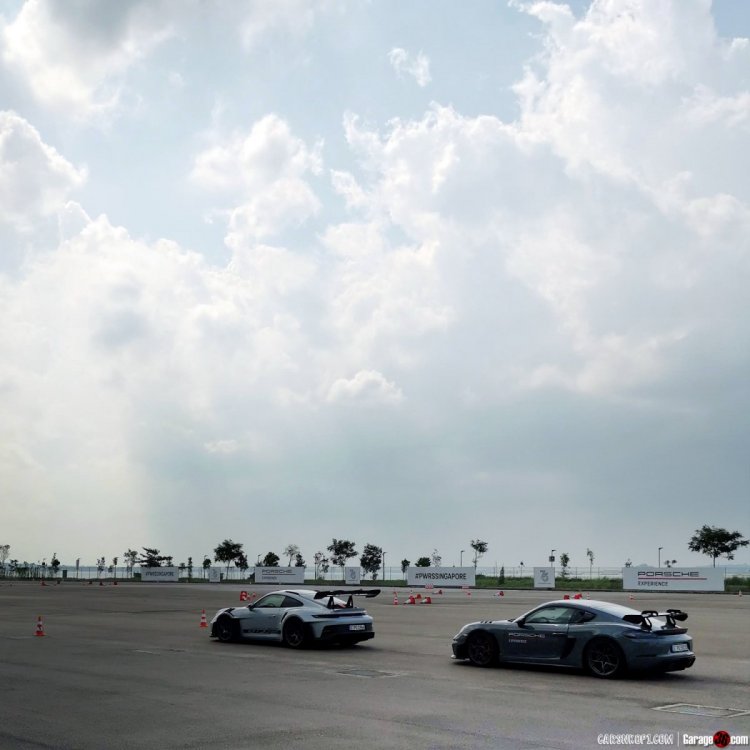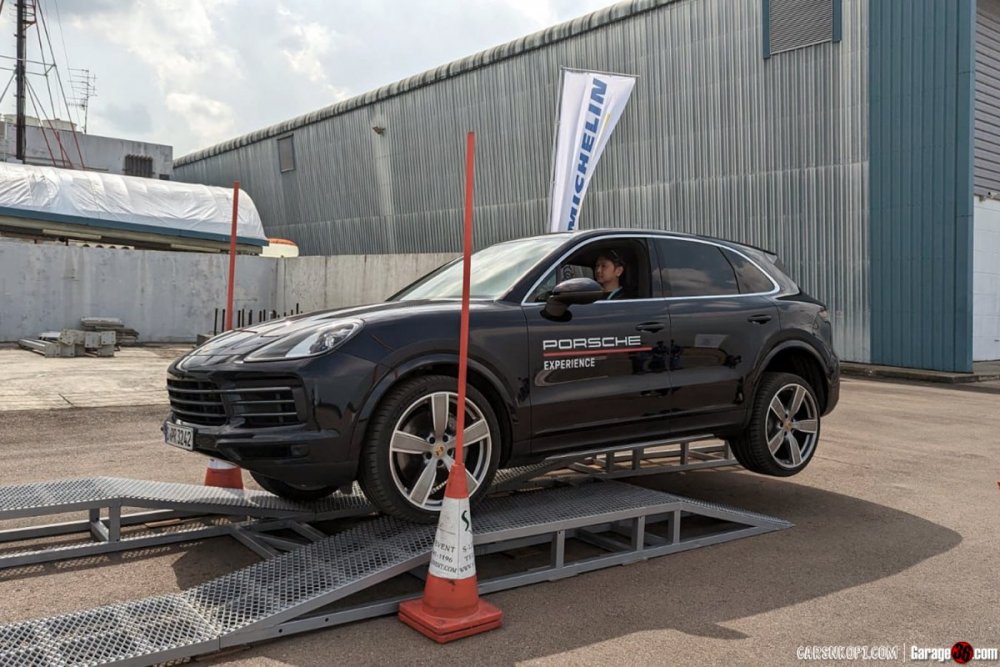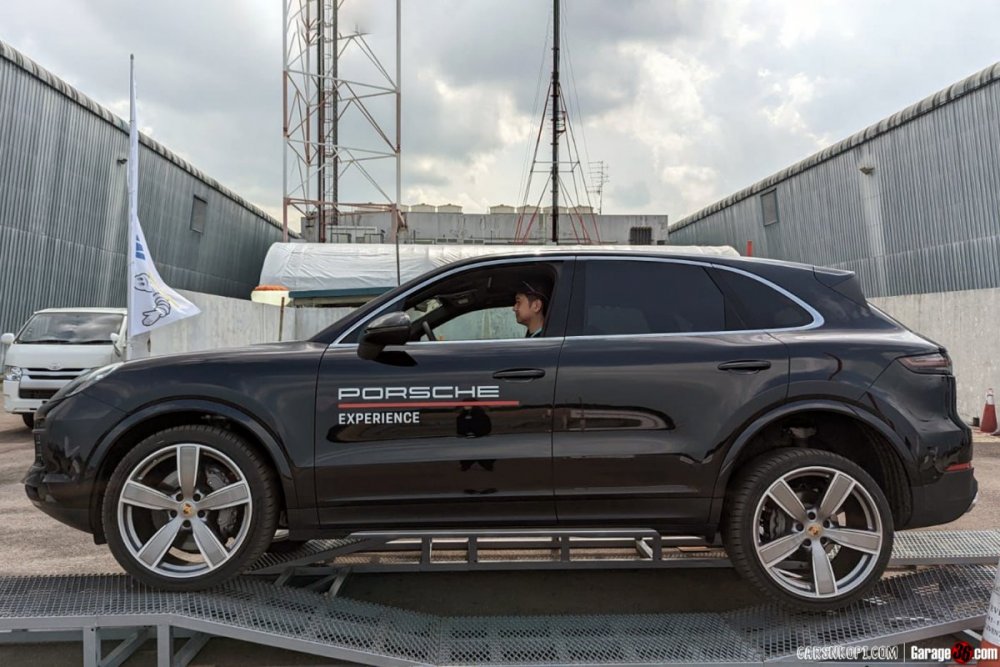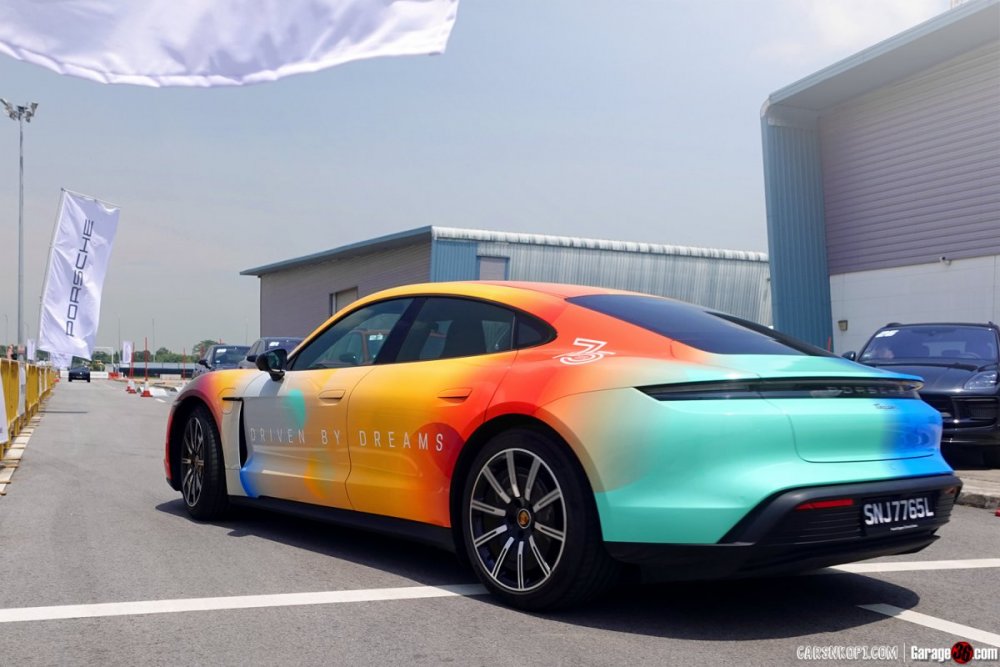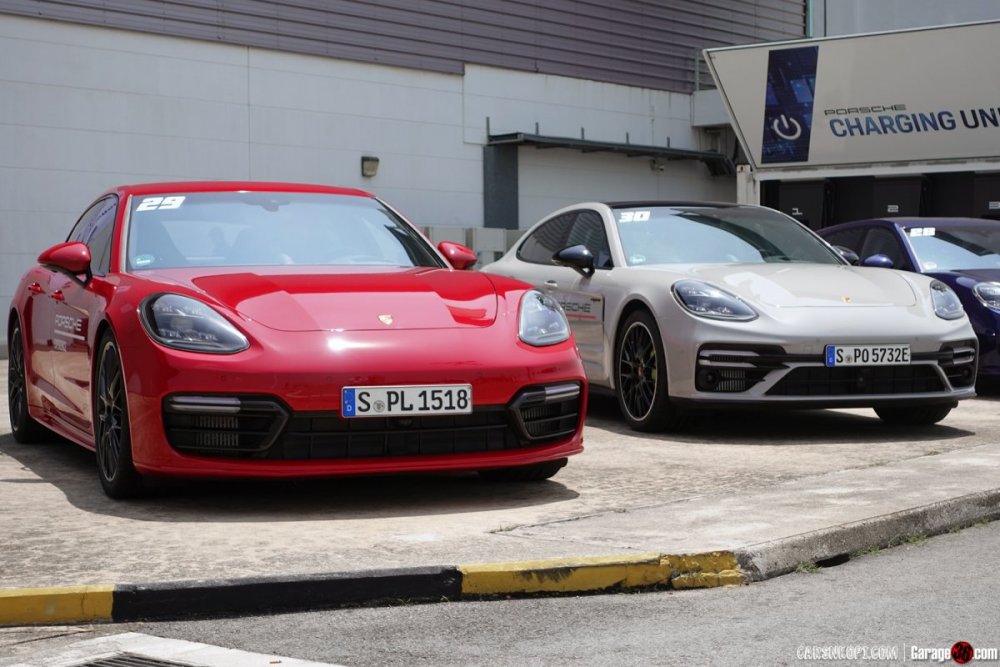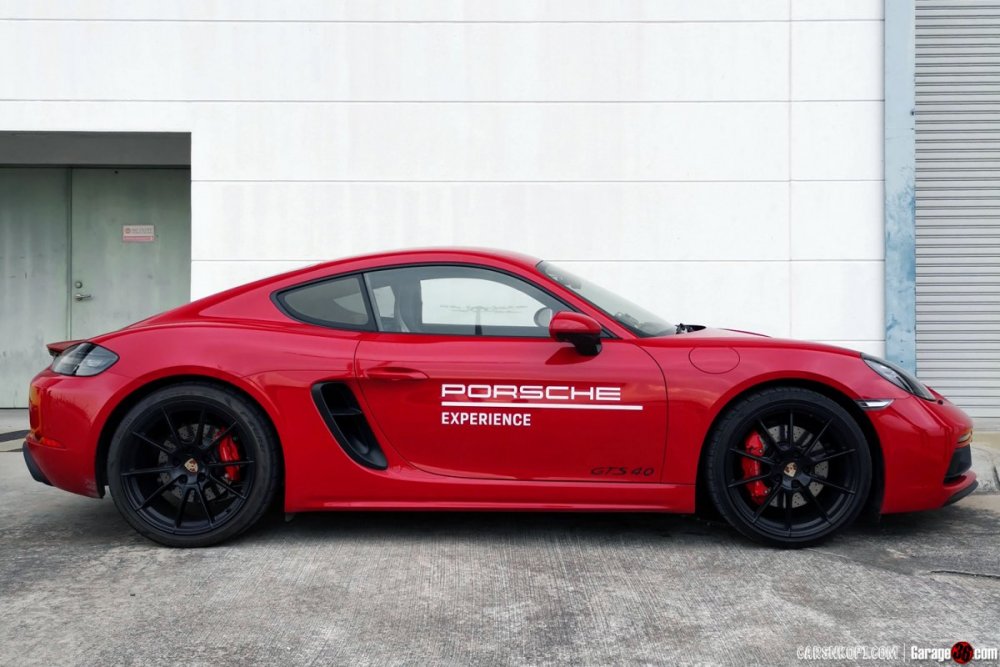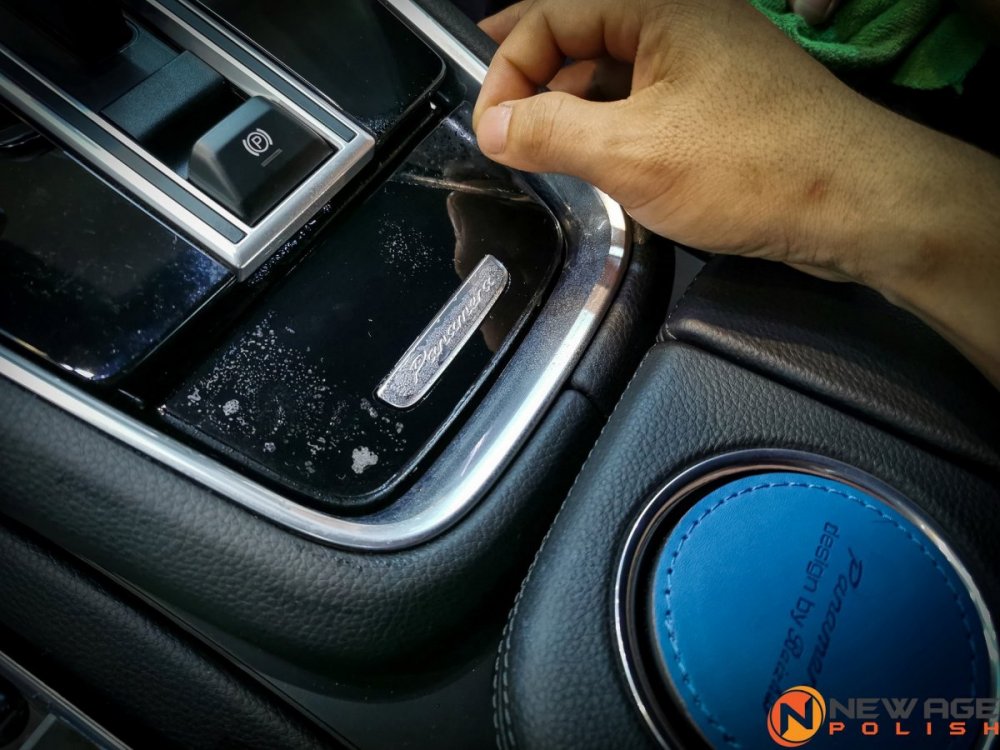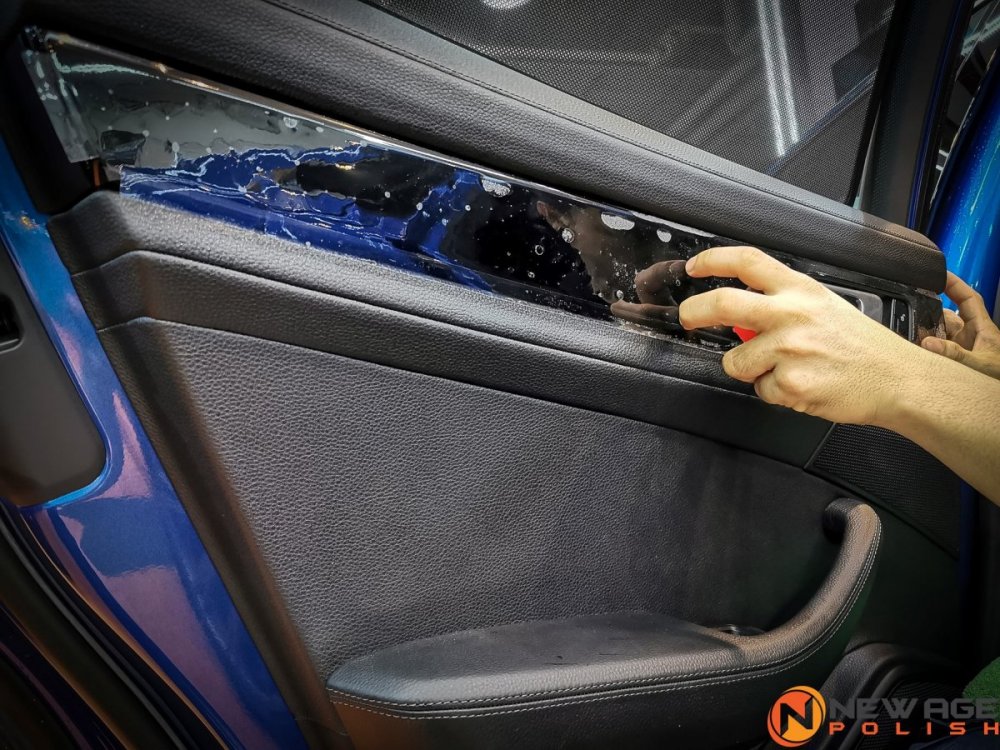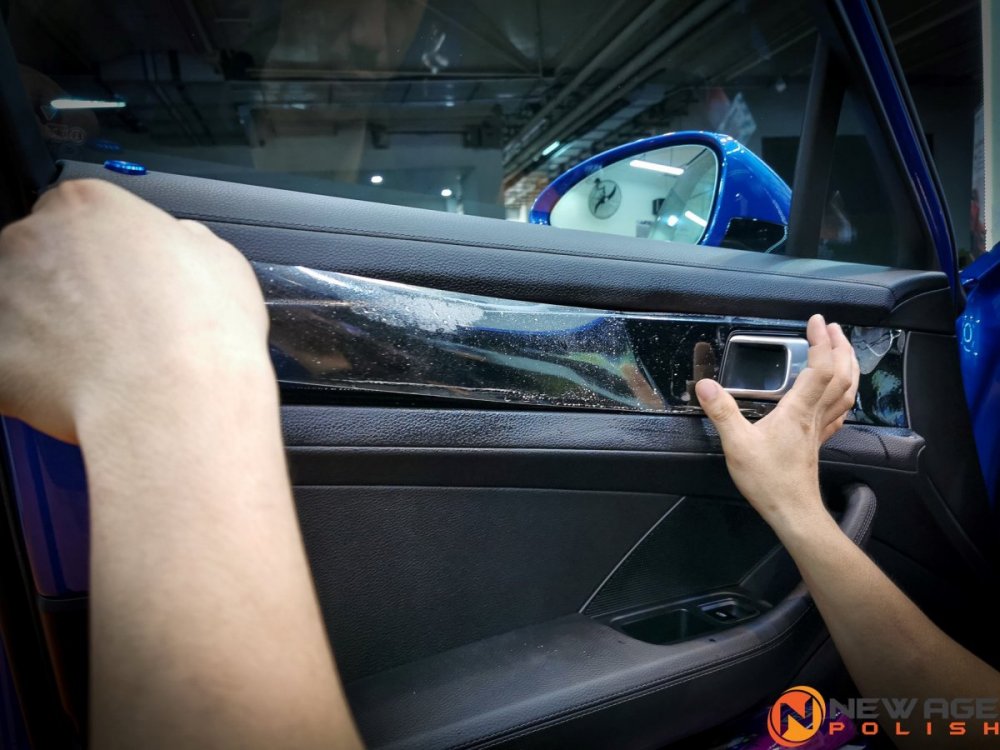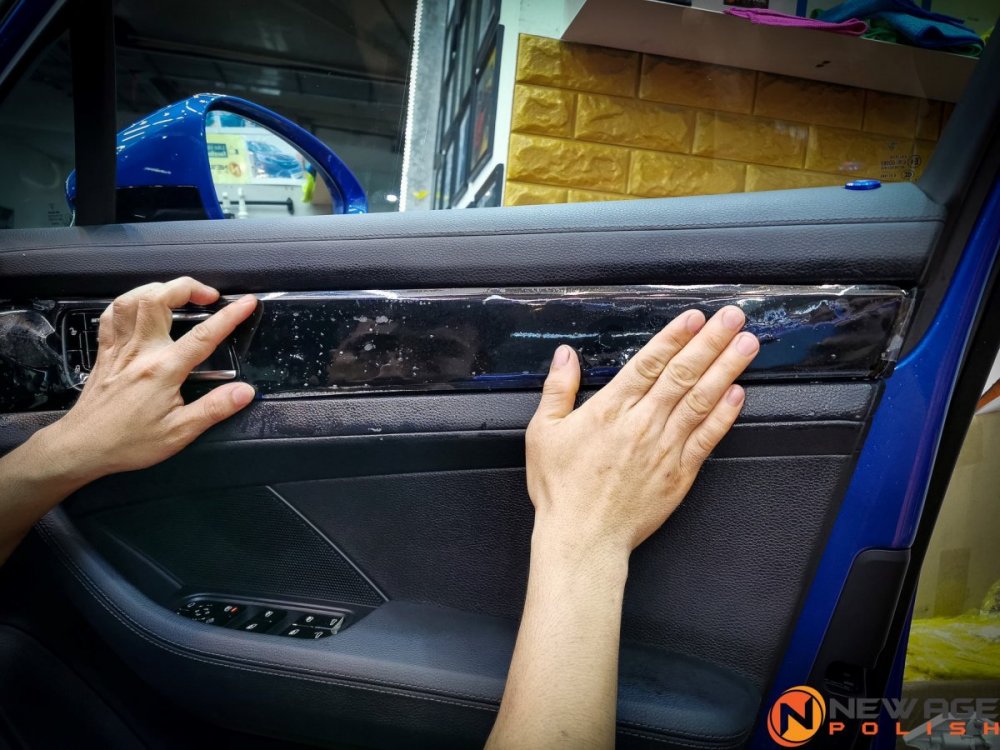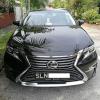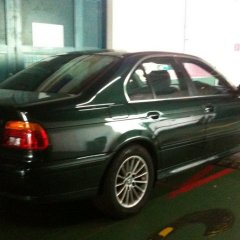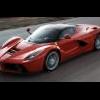Search the Community
Showing results for 'Panamera'.
-
Link: https://carsnkopi.wordpress.com/2024/04/24/tokyo-auto-otaku-2024-porsche-experience-centre-tokyo/ For Porsche enthusiasts, petrolheads, and driving enthusiasts seeking automotive excitement in Tokyo, Japan (safely and under controlled conditions), the Porsche Experience Centre just outside the bustling metropolis might offer the perfect solution for a thrilling morning or afternoon outing. The 43-hectare facility, opened in 2021, is the ninth Porsche Experience Centre globally and offers visitors the chance to discover Porsche vehicles in various controlled conditions, some of which are unique compared to other PEC courses worldwide. And because yours truly was in Tokyo, I was given the chance to drop and have a taste. Getting to and from PEC Tokyo, situated just outside the city centre, is most conveniently done by car. Public transportation options are limited and can be time-consuming. Opting to drive also presents the opportunity to experience the Tokyo Wan Aqua-Line Expressway and visit the picturesque Umihotaru rest area along the way. From Umihotaru, PEC Tokyo is only a short drive away and soon, you’ll be greeted with PEC Tokyo’s exterior that features an Edo Kiriko cut glass design motif, as well as a collection of fine Stuttgart machinery awaiting their drivers. Let’s head inside. Seeking refuge from the winter chill (or summer heat, depending on the time of your visit) within the cozy confines of PEC allows you to enjoy amenities such as a café, a restaurant, and a PEC Tokyo shop stocked with plenty of goodies. Additionally, there’s a simulation lab where you can embark on virtual outings to various circuits around the world, piloting a myriad of machines from Porsche’s illustrious past and present. But of course, the first thing you’d see once you head through the front door is a curated display of P-cars. On my visit, there was a custom-painted Taycan (by American painter Kaves), a stunning Cayman featuring 906 Colours, a vintage 911 and even their 919 Hybrid LMP racing car. | Since my driving session was scheduled for later in the day, I popped into the simulation lab for a quick session before heading to Restaurant 906. While it may not rival Restaurant Christophorus in Stuttgart, it certainly holds its own. However, with a view of the entire circuit calling for attention, one can’t help but feel the excitement building as I hastily downed my lunch, albeit it with a tinge of guilt knowing how much effort went into preparing each dish. With lunch done, it was time to hit the track. PEC Tokyo offers a full range of courses varying in intensity for all driver skill levels across a portfolio of cars. The list of cars available is as extensive as it is impressive. You can choose from a Macan S, Macan GTS, 718 Boxster, 718 Cayman GTS, 4.0 718 Cayman GT4, 718 Cayman GT4 RS, Panamera GTS, Taycan 4S, Taycan GTS, Taycan Turbo, Taycan Turbo S, 911 Carrera, 911 Carrera S, 911 Carrera 4S, 911 Carrera GTS, 911 Turbo S, 911 GT3 and the 911 GT3 RS. A specially prepared Cayenne is also available for off-road trails for those who prefer going off the beaten path. For enthusiasts seeking a broader experience, programs are available to sample multiple cars in a single session, allowing for both car-to-car comparisons and exploration of drivetrain variances. For my 90-minute drive, my steed of choice (or rather, chosen for me) was a beautiful red 911 Carrera GTS. While 90 minutes may seem limited, with a dedicated instructor providing one-to-one coaching, it’s ample time to fully explore the capabilities and boundaries of the cars. At PEC Tokyo, various driving experiences are available, including practising launch control, slalom driving, full braking, an area for emergency manoeuvres with a kick plate to send your car sideways in either direction and even a wet low-friction handling oval for drifting sessions. Unlike other driving centres I’ve visited in other locales, PEC Tokyo uniquely offers these experiences buffet-style. There’s no set schedule to adhere to, giving participants the freedom to pick and choose what they’d like to do at any given time. Of course, if it gets crowded, some waiting time would be involved, but if you manage to drop by during a relatively quiet period (like me), you’ll pretty much have the entire facility to yourself. As one might expect, I spent a big chunk of my time drifting (or rather, attempting to drift) the 911. Unlike the BMWs I’m more accustomed to, I discovered that balancing a 911 in a sustained sideways drift is a much more engaging process, one where the fine line bordering control and spinning out is much more delicate with very little room for error. Featuring numerous elevation changes and iconic corners borrowed from renowned circuits worldwide, such as the Carousel from the Nürburgring and the Corkscrew from Laguna Seca, the track offers an exhilarating driving experience. I found myself spending the majority of my time here, enjoying countless laps with the GTS effortlessly soaking up every corner. So much so that I actually ended my session early as the physical strain began to take its toll. As the sun began its descent, casting a beautiful glow over the premises, I couldn’t help but feel exhausted yet fulfilled. Saying goodbye to my encouraging instructor, I embarked on my journey back to central Tokyo, reflecting on the afternoon well spent.
-
The new face does not look like a Porsche at a quick glance. Putting the look aside, one of the highlight is it unique active suspension system. The optional Porsche Active Ride, available for E-Hybrid, allows the car to lean into corners like a motorcycle, by keeping the body flat and even overcompensate for the vehicle’s pitch and roll movements The standard two-chamber, two-valve air suspension with Porsche Active Suspension Management separates the damper’s compression and rebound control for greater comfort. Rear-axle steering is also optional for all model. Panamera Turbo E-Hybrid Porsche Panamera 4 Porsche will offer four different E-Hybrid powertrains, including the all-powerful Panamera Turbo E-Hybrid. It packs a revamped twin-turbocharged 4.0-liter V8 engine and an electric motor powered by a 25.9-kilowatt-hour battery. Total output is 670 horsepower and 929 Newton-meter of torque, sending power to all four wheels via an eight-speed PDK transmission. It can hit 100 kilometers per hour in 3.0 seconds and reach a top speed of 314 km/h. The Panamera and Panamera 4 get a turbocharged 2.9-liter V6 engine under the hood. It produces more power than before, pumping out 348 hp and 499 Nm of twist – an increase of 23 hp and 50 Nm, respectively. The V6 can propel the regular model to 100 km/h in 5.0 seconds and help it reach its 272 km/h top speed. The all-wheel-drive Panamera 4 can achieve that same feat in 4.7 seconds, reaching 270 km/h.
-
This the launching of the new Porsche Panamera...all with German Licence Plates & LHD.
- 6,641 replies
-
- 1
-
.png)
-
- first pagers
- lai
-
(and 1 more)
Tagged with:
-

Nice / Rare Vehicle Registration Number - Part 2
Carbon82 replied to Carbon82's topic in General Car Discussion
From Panamera to 7er and now E-Class, BMW 3er next? This plate is last seen on a Lexus ES for several years before the Corolla (mid last year thereabout). Many here has spotted it and post here before. The shot below taken by @Fitvip Should still be the same owner as I still see it around my place on and off. Caught 2 SL plate yesterday, both on BMW. -

30 Discontinued Cars That Won't Make It To 2024
kobayashiGT posted a topic in General Car Discussion
We're nearing the end of 2023, which means the door is closing on a number of vehicles as automakers have rolled out most of their new products for next year. That means many of the cars, trucks, and SUVs that we love so much won't make it to 2024. Luxury brands like Audi and Mercedes-Benz are putting multiple cars to rest as they prep new products, while American automakers like Chrysler and Dodge have at least one vehicle going the way of the dodo as they prep for the upcoming EV onslaught. Even a few supercars won’t stick around next year, some destined to be replaced by more powerful models. More cars will join this list next year. For now, let's say our goodbyes and remember those vehicles we've lost. Alpina BMW B7 Alpina inked a deal with BMW early last year that ended the in-house tuner's independent run, giving the automaker full control of the company after 2025. With that, the Alpina B7 – based on the BMW 7 Series – won't see a direct successor based on the current generation with other Alpina models in danger of being discontinued as well. Audi R8 Audi's enduring supercar is finally reaching the end of the line. With the 2023 GT RWD model announced for the US (and priced at a cool $251,395), production of the R8 is officially winding down after 16 years spanning two generations. Audi TT The Audi TT will say its goodbyes after 25 years. The iconic sports car survived two and a half decades before the automaker made the decision to move on from the nameplate. Buyers in the UK will see a Final Edition model for 2023, while the RS Heritage Edition introduced last year will be the last of its kind for the US. Chevrolet Bolt EV The bigger Bolt EUV arrived with Chevy's refresh in 2022 boasting more interior passenger space, and for the first time, Super Cruise on a Chevy product. It too, though, was discontinued. It's unclear whether the new Ultium-based Bolt expected in the next few years will also include the larger EUV. Chevrolet Camaro Turbo The Chevrolet Camaro nameplate as a whole will stick around for one more year before it too is discontinued – but the base turbo model won’t. Chevrolet confirmed that the four-cylinder Camaro won’t be available for the 2024 model year, which means the base motor is now the 3.6-liter V6 making 335 hp. That version starts at $32,495. Chrysler 300 Chrysler is rolling out just a few thousand examples of the 300 sedan for the 2023 model year; only 2,300 units are available for buyers this year in both V8 and V6 variants. This 300, though, marks the end of the line for the muscle car after this generation survived 18 years following its debut for the 2005 model year. Dodge Challenger Dodge is reluctantly discontinuing the Challenger as the automaker moves to electrification, specifically with the arrival of the new Charger Daytona SRT EV. As one final act, though, Dodge released a variety of "Last Call" special edition Challengers, including the limited Demon 170 with 1,025 horsepower and a ridiculous 0-60 time of just 1.7 seconds. Dodge Charger Like the Challenger, Dodge is discontinuing the Charger sedan. The Charger sedan has been a staple in the Dodge lineup since its debut in 2006, with some truly awesome models like the Scat Pack, the Hellcat, and the Hellcat Redeye in that successful 17-year production run. Dodge Hellcat Models But it's not just the Challenger and Charger names that will be discontinued after the 2023 model year – Dodge is killing the entire Hellcat line, too. Reports indicate that the final Hellcat engine will be built later this year with the iconic supercharged 6.2-liter V8 engine being phased out. Ferrari F8 Tributo Ferrari’s 488 replacement had a relatively short run. Believe it or not, only one (1) example of the F8 Tributo was officially imported into the US. But don’t worry, buyers that want the F8 coupe’s same stellar performance with the upgrade of a removable roof can still get their hands on an F8 Spider. That version starts at $319,342 and packs the same 3.9-liter V8 engine with 710 hp. Ferrari Portofino M Say arrivederci to the lovely Ferrari Portofino M as it’s set to be replaced by the Roma Spider in 2024. The Roma Spider boasts a more-powerful twin-turbocharged 3.9-liter V8 engine that gives it 612 horsepower and 561 pound-feet of torque, and it offers a traditional cloth roof as opposed to the Portofino’s convertible hardtop, which helps with weight. Ford Edge The mid-size Ford Edge probably won't survive after this year in part due to labor disputes at the automaker's Oakville Assembly plant in Canada. That, and the Blue Oval's ongoing transition to EVs. The Edge will live on in China in the form of a longer-wheelbase hybrid crossover, but there are currently no plans to bring that SUV to America. And as for the Lincoln Nautilus – the Edge's more luxurious cousin – it recently underwent a major makeover for the 2024 model year. Ford Explorer Hybrid If you work in law enforcement, you can still buy a Ford Explorer Hybrid. But for the average man, Ford is killing off its fuel-sipping mid-sizer. The current iteration of the Explorer Hybrid debuted in 2020, but it won't make to the 2024 model year. Hopefully another hybrid SUV is on the way. Ford Fiesta Although Ford hasn’t sold the Fiesta in the US since 2019, the seventh-generation model was available in Europe – but now it's being discontinued, too. Ford plans to fill its spot in the lineup with an all-electric version of the Puma crossover, with the last few examples of the Fiesta expected to roll out of Ford’s German factory in June. Ford Transit Connect Ford's smallest work van, the Transit Connect, won't survive through the 2024 model year. The company did have a new version of the Transit planned using the Maverick's platform, but those plans have reportedly been scrapped as well. Kia Stinger Although it was rumored that the Kia Stinger would be discontinued before the 2023 model year, the sporty sedan is at least sticking around for another short run before production ends in 2024. As a sendoff to the Stinger, Kia introduced a Tribute Edition model with Moonscape matte paint and new 19-inch wheels, with only 1,000 units planned worldwide. Kia Rio Kia is killing off the Rio for the 2024 model year. The automaker's smallest vehicle has been around globally since 1999, and this current generation debuted for the US in 2016. As of this year, it's still one of the cheapest cars in America with a base starting price of $17,875. There's still a change it will be replaced by a new affordable offering next year. Lincoln Aviator Grand Touring Like the Explorer, Lincoln is also discontinuing its mid-size SUV hybrid option. The Aviator Grand Touring won't make it to 2024, which, unlike the Ford, was a plug-in-hybrid vehicle and qualified for the full $7,500 tax credit in the US. Next year the Aviator will only be available with a twin-turbocharged 3.0-liter V6. Mazda CX-9 Mazda is discontinuing one three-row SUV in place of another. The longstanding CX-9 will disappear after the 2023 model year in place of the new-and-much-improved CX-90. The new CX-90 has more space, a punchier turbocharged inline-six engine, and for the first time on any Mazda of this size, a plug-in-hybrid option with up to 26 miles of range. The CX-9 won’t be missed. Mazda MX-30 Another Mazda that won’t survive in the US into 2024 is the compact MX-30 EV. With an abysmal 100 miles of range and a $34,645 starting price, the MX-30 was relatively fun to drive, but it didn’t offer enough range for its asking price. And you could only buy it in California. Hopefully better EVs are on the way from Mazda. McLaren 720S McLaren has already shut the door on the 720S sports car with production quietly coming to an end late last year. But the supercar maker already has a successor on the way dubbed the 750S – and it’s sold out until late next year. The 750S will reportedly have up to 740 hp and could debut as early as this month. Mercedes-Benz C-Class Cabriolet Mercedes is trimming down its lineup pretty dramatically. Last year the company discontinued the A-Class and CLS, and now the C-Class Cabriolet is next in line. The timeline isn’t totally clear, but reports suggest the C-Class convertible will be discontinued sometime between 2023 and 2024, meaning it likely won’t survive through the 2024 model year. Mercedes-Benz C-Class Coupe The C-Class convertible won’t be the only discontinued version of the compact luxury car. Mercedes also plans to kill off the C-Class Coupe at the same time, leaving only the sedan in the lineup for the foreseeable future. Mercedes-Benz CLS Another victim of Mercedes-Benz’s ongoing lineup simplification is the CLS. Last year the company killed off its sporty CLS 53 offering, but now the entire nameplate will disappear as production is officially slated to end in August. Mercedes-Benz E-Class Cabriolet The E-Class Cabriolet will follow the C-Class convertible on its way out the door with the larger two-door also being discontinued. It will follow the same timeline as the C-Class, with production slated to end sometime between this year and next. Mercedes-Benz E-Class Coupe And of course, just like the C-Class, Mercedes-Benz is also killing the E-Class Coupe sometime between now and 2024. With those two two-doors being discontinued, that means the updated AMG GT – whenever it debuts – will be the only true coupe in the lineup, not counting the many four-door "coupes." Mercedes-Benz Metris It might not be Mercedes-Benz’s most well-known model, but the Metris has been a staple among work vans since 1996. Now it’s being discontinued. Both the work and passenger versions of the Metris will be disappearing after this year. Nissan Maxima Nissan's full-size Maxima will reach the end of the line before the end of 2023. It was rumored that Nissan would replace the Maxima will a full-size EV last year, but with no new electric sedan on the way anytime soon, Nissan has quietly killed the Maxima prior to the 2024 model year. Porsche Panamera Sport Turismo With the debut of the new Panamera, Porsche is discontinuing the wagon variant in the US due to slow sales. The Sport Turismo accounted for less than 10 percent of total demand for the previous Panamera. -
Hi friends As above. I'm considering a BMW 740i 3-litre or a Porsche Panamera 3-litre. Any comments? I also welcome any other suggestions. Thank you in advance.
- 242 replies
-
- 1
-

-
- your advice is appreciated
- bmw
- (and 11 more)
-
Mr Arry, Porsche Panamera Another return customer after his F10 last year. This time, for his Panamera. He visited us again to view our samples as he was not sure on what he really wanted and needed our opinion. We do give advices but final decision is still yours Custom order placed. He knew that we will do a good job for his Panamera like how we done for his f10. We are very grateful that he still chose us despite knowing other sellers. Installation done, upgraded to facelift 971 steering wheel with our in-house carbon extended paddle shifter. Still a full black option as he doesn’t like fancy colors. It is to match his beige interior too. He might be back for an interior revamp after his spray painting is done. Porsche Panamera 970 Carbon fiber steering wheel upgrade PM us for more info or WhatsApp us @ https://wa.me/6594293337 https://wa.me/6593293337 https://wa.me/6581143337 https://wa.me/6591413337 We are located @ 10 Kaki Bukit Road 2 #03-11 First East Centre S41786
- 424 replies
-
- carbon steering
- carbon fibre
-
(and 7 more)
Tagged with:
-

[Official] 2024 3rd Generation Porsche Panamera
Heartbreakid replied to Carbon82's topic in Conti Talk
Read that the shooting brake (more like a hatchback instead) will not be available in this new generation. New generation Panamera? Hmm, it looks like a facelift like what Toyota did to their Camry recently. Hahaha. -
2021 Porsche Panamera Turbo S 2021 Porsche Panamera 4S E-Hybrid 2021 Porsche Panamera 4S E-Hybrid Executive A unique symbiosis of contrasts: the new Porsche Panamera now covers an even wider spectrum. It combines the performance of a sports car with the comfort of an exclusive saloon. With the 463 kW (630 PS) Panamera Turbo S, the sports car manufacturer successfully supports its claim to best-in-class performance. The new top-of-the-range model betters the performance figures of the previous Panamera Turbo by a wide margin. Porsche also continues to pursue its E-Performance strategy. The Panamera 4S E-Hybrid is a new addition to the range of plug-in hybrids, offering a completely new drive system with 412 kW (560 PS) system output. Compared with the previous hybrid models, the all-electric range has been boosted by up to 30 per cent. Comfort and sportiness both benefit from enhanced chassis components and control systems in combination with the new-generation steering control and tyres. Turbo S: from zero to 100 km/h in 3.1 seconds With a power output of 463 kW (630 PS) and a torque of 820 newton metres, the new Porsche Panamera Turbo S offers 59 kW (80 PS) more power and 50 Nm more torque than the previous flagship Turbo with combustion engine. This has a very positive effect on driving performance: in Sport Plus mode, the Turbo S model accelerates from 0 - 100 km/h in just 3.1 seconds. Developed in Weissach and built in Zuffenhausen, the familiar four-litre V8 biturbo engine has been comprehensively overhauled to enable the car to achieve a top speed of 315 km/h. In order to transfer the enormous power to the road in a controlled manner and maximise cornering performance, the three-chamber air suspension, the Porsche Active Suspension Management (PASM) and the roll stabilisation system Porsche Dynamic Chassis Control Sport (PDCC Sport) including Porsche Torque Vectoring Plus (PTV Plus) have been customised to each specific model and optimised accordingly. The new Porsche Panamera Turbo S has already proven its uncompromising performance capability on the legendary Nürburgring Nordschleife: test driver Lars Kern completed the 20.832 kilometre-long lap on the most demanding race track in the world in exactly 7:29.81 minutes - the new official record in the "executive cars" class. Increased sportiness and comfort thanks to optimised chassis systems The V8 biturbo engine in the Porsche Panamera GTS was optimised with a specific focus on its power delivery. With 353 kW (480 PS) and 620 Nm, the new Panamera GTS delivers 15 kW (20 PS) more power than its predecessor. The power output continuously increases up to close to the engine speed limit. The power delivery is therefore like that of a classic sports car with naturally aspirated engine. The traditional V8 sound characteristics are even more prominent than before thanks to the new standard sports exhaust system featuring asymmetrically positioned rear silencers. The new Porsche Panamera and Panamera 4 are now equipped with the familiar 2.9-litre V6 biturbo engine in all markets worldwide. Delivering 243 kW (330 PS) and 450 Nm, the performance remains unchanged. The chassis and control systems have been geared towards a sporty and also comfortable character for all new Panamera models. Some systems have even been applied completely from scratch. For example, the revamped Porsche Active Suspension Management (PASM) system results in a noticeable improvement in damping comfort, while the control of the electric roll stabilisation system Porsche Dynamic Chassis Control Sport (PDCC Sport) ensures improved body stability. There is also a new equipment generation for the steering control and tyres. 4S E-Hybrid with 17.9 kWh battery and an electric range of up to 54 km Porsche is presenting a further performance-oriented plug-in hybrid model with the new Panamera 4S E-Hybrid. The intelligent combination of the 100 kW (136 PS) electric motor integrated into the eight-speed dual-clutch PDK transmission and the 2.9-litre V6 biturbo engine with 324 kW (440 PS) generates a system output of 412 kW (560 PS) and a maximum system torque of 750 Nm. The performance figures are therefore very impressive: combined with the standard Sport Chrono Package, the sprint from 0 - 100 km/h is covered in 3.7 seconds. The top speed is 298 km/h. The gross battery capacity has been increased from 14.1 to 17.9 kWh compared with the previous hybrid models using optimised cells and the driving modes have been optimised for even more efficient energy utilisation. The Porsche Panamera 4S E-Hybrid has an all-electric range of up to 54 km in accordance with WLTP EAER City (NEDC: up to 64 km). Sharper visual appearance for greater presence The new Porsche Panamera models - in addition to the sports saloon, they can also be ordered as Sport Turismo or Executive with lengthened wheelbase, depending on the drive system - are now equipped from the factory with the previously optional Sport Design front end with striking air intake grilles, large side cooling openings and a single-bar front light module. The completely new front end of the Panamera Turbo S is differentiated by the larger side air intakes and newly designed elements in the exterior colour, which are connected horizontally and thus emphasise the width of the vehicle. The light modules of the dual Turbo front lights are now set much further apart. The revamped light strip at the rear now runs seamlessly over the luggage compartment lid with an adapted contour. It thus provides a continuous and flowing connection between the two newly designed LED tail light clusters. GTS models sport the new darkened Exclusive Design tail light clusters as standard with dynamic coming/leaving home function. Three new 20- and 21-inch wheels have been added to the wheel range, so that a total of 10 different designs are now available. Digital connectivity and assistance systems for safety and comfort The Porsche Communication Management (PCM) includes additional digital functions and services such as the improved Voice Pilot online voice control, Risk Radar for up-to-date road sign and hazard information, wireless Apple® CarPlay and many other Connect services. The Panamera also offers an extensive range of innovative light and assistance systems, such as the now standard Lane Keeping Assist with road sign recognition, as well as Porsche InnoDrive including adaptive cruise control, Night Vision Assist, Lane Change Assist, LED matrix headlights including PDLS Plus, Park Assist including Surround View and head-up display. The new Porsche Panamera is available to order now and will be in dealerships in the middle of October 2019. In Germany, prices start at 91,345 euros for the rear-wheel-drive Panamera. All other models come with all-wheel drive: prices start from 95,289 euros for the Panamera 4, from 126,841 euros for the Panamera 4S E-Hybrid, from 136,933 euros for the Panamera GTS and from 179,737 euros for the Panamera Turbo S - in each case including value-added tax and country-specific equipment.
-
hey guys, am planning to purchase a used Panamera Hybrid but worry about the battery issue. Any experienced owner know what's the damage like to replace a new one? I heard its like $10K or something. If so, am I better off getting a non-hybrid? If the hybrid battery break down, will the vehicle stop working? sorry asking because I have driven one hybrid before and the battery died and the vehicle stall in the middle of the road, so had bad experience.
-
911 design language with a much more dynamic flyline Visually, the unique concept of this large Porsche is reflected in a new expressive design: unmistakably a Panamera, unmistakably a sports car - with long, dynamic proportions, pronounced shoulders, athletic flanks and an extremely fast roof line that is 20 mm lower at the rear. This typical Porsche flyline creates a stylistic link to Porsche's design icon, the 911. Plenty of functionality and easy interaction in the Porsche Advanced Cockpit The typical Porsche interior has been reinterpreted for the future in the new Panamera. Black panel surfaces and interactive displays combine a clear and intuitive user interface like that of smartphones and tablets with the practical requirements for controlling the car. Classic hard keys and conventional instruments have been reduced significantly. They have been replaced by touch-sensitive panels and individually configurable displays which take centre stage in the new Porsche Advanced Cockpit - with great benefits for the driver as well as the front and rear passengers. Despite a significantly extended range of communication, convenience and assistance systems, different functions can now be used and operated more clearly and intuitively. The Porsche Advanced Cockpit transforms the analogue world into the digital present of mobility, while leaving room for passion. The tachometer, positioned centrally in the instrument cluster, is a tribute to the 1955 Porsche 356 A. New V6 and V8 biturbo engines with ample power and full-bodied sound A Porsche has always impressed with more than just power; its efficiency is equally important. To elevate this formula to a new level, all of the second generation Panamera's engines have been redesigned. They have all been made more powerful, while significantly improving fuel economy and reducing emissions. Three new biturbo direct injection engines are being introduced at the market launch: in the Panamera Turbo, the Panamera 4S and the Panamera 4S Diesel. All of them - and for the first time including the diesel - may be equipped with a permanent all-wheel drive system and a new eight-speed Porsche dual-clutch transmission (PDK). A V8 petrol engine that delivers 404 kW / 550 hp powers the Panamera Turbo and a V6 petrol engine with 324 kW / 440 hp drives the Panamera 4S. In the Panamera 4S Diesel, a V8 with 310 kW/422 hp generates powerful thrust and a maximum torque of 850 Nm. A luxury saloon that can take to the race track In keeping with the overall concept of the new Panamera, the chassis also unites the cruising comfort of a luxury saloon with the performance of a true sports car. This is achieved by supplementing the impressive basic layout with optional innovative systems such as an adaptive air suspension with new three-chamber technology, including Porsche Active Suspension Management (PASM electronic damper control), the enhanced Porsche Dynamic Chassis Control Sport (PDCC Sport) system including Porsche Torque Vectoring Plus (PTV Plus) and active roll stabilisation, as well as a new electromechanical steering system. The integrated 4D Chassis Control system analyses and synchronises all chassis systems in real time and optimises the road performance of the new Panamera. Porsche is also taking the steering precision and handling of sports cars into the class of Gran Turismo cars with rear axle steering - which is also new and has been adapted from the 918 Spyder and 911 Turbo. Brake performance has also been improved. Next generation assistance systems The Panamera is equipped with many standard and optional assistance systems, which make life while driving more convenient and safer. The most important new systems include a night vision assistant, which uses a thermal imaging camera to detect people and large animals and displays a colour highlighted warning indicator in the cockpit. If the optional new LED matrix headlights with 84 image points are selected, people beyond the visual range of the dipped beam headlight are also illuminated briefly if they are in the computed driving corridor, allowing the driver to react even faster. The new night vision assistant is one of the assistance systems that helps to avoid critical situations in advance. Looking especially far ahead along the road is the new Porsche InnoDrive, which includes adaptive cruise control. Based on navigation data and signals from radar and video sensors, it computes and activates the optimal acceleration and deceleration rates as well as gear selections and coasting phases, for the next three kilometres. In doing so, this electronic co-pilot automatically takes bends, inclines and speed limits into account. The new Porsche Panamera can already be ordered now, and it will make its appearance at dealers on November 5, 2016. Prices in Germany start at 113,027 euros including VAT for the Panamera 4S. Prices for the Panamera 4S Diesel start at 116,954 euros, and the Panamera Turbo starts at 153,011 euros. More power, better fuel efficiency New, powerful and fuel-efficient: the V6 and V8 turbo engines of the Panamera. And they all share a special conceptual design characteristic, which in the jargon of engine developers is known as "with the hot sides inward". Translated, this means that the turbochargers of the new Panamera engines are integrated centrally into the V of the cylinder banks. This central turbo layout yields numerous benefits: The engines are more compact, and this enables a lower mounting position. This, in turn, has a positive effect on the vehicle's centre of gravity. The short paths between the two turbochargers and the combustion chambers produce spontaneous throttle response. Engine response can be further increased using the optional Mode Switch with the Sport Response Button. The Mode Switch, which was first introduced in the Porsche 918 Spyder, is an intuitively operated rotary ring on the steering wheel, which can be used to activate one of four driving modes (Normal, Sport, Sport Plus or Individual). Located at the centre of the switch is the Sport Response Button. It can be used to free up the maximum power potential of the Panamera at the press of a button. Initially, the Panamera Turbo has the most powerful petrol engine of the model series. Its 4.0-litre biturbo V8 develops 404 kW / 550 hp (at 5,750 rpm) and a maximum torque of 770 Nm (between 1,960 and 4,500 rpm). It has 30 hp more power than the previous model, and its maximum torque has been increased by 70 Nm. The eight-cylinder engine accelerates the Panamera Turbo to 100 km/h in 3.8 seconds; with the Sport Chrono Package the sprint time is just 3.6 seconds. The Porsche can reach a top speed of 306 km/h. These are impressive figures that illustrate just how easily the engine can propel the Panamera with its power-to-weight ratio of just 3.6 kg/hp. These extraordinary performance figures contrast with lower combined fuel consumption figures which, at 9.4 - 9.3 l/100 km, are up to 1.1 l/100 km less than that of the previous model (New European Driving Cycle or NEDC). These figures equate to CO2 emissions of 214 - 212 g/km. Porsche uses complex twin-scroll turbochargers to supply compressed air to the V8's combustion chambers. The two counter-rotating chargers produce maximum torque figures at very low engine speeds. The Panamera Turbo is also the first Porsche to be equipped with the new adaptive cylinder control in its engine. In part-load operation, the system temporarily and imperceptibly turns the eight-cylinder into a four-cylinder engine. This reduces fuel consumption by up to 30 per cent, depending on power demand in the four-cylinder phases. The 2.9-litre V6 biturbo engine of the Panamera 4S develops a maximum power of 324 kW/440 hp (20 hp more than the previous model); it is already available at 5,650 rpm. Between 1,750 and 5,500 rpm, the new six-cylinder delivers 550 Nm (30 Nm more) to the drive axles. The Panamera 4S can reach 100 km/h in just 4.4 seconds (4.2 seconds with the Sport Chrono Package). With a top speed of 289 km/h, this Porsche also approaches the 300 km/h mark. The NEDC combined fuel consumption is 8.2 - 8.1 l/100 km (186 - 184 g/km CO2). Compared to the first generation Panamera 4S, this represents a fuel saving of up to 1.0 l/100 km or eleven per cent. Like the eight-cylinder engine of the Panamera Turbo, the six-cylinder engine of the Panamera 4S also has petrol direct-injection injectors that are positioned in the combustion chamber. This injector position offers optimal combustion, maximum efficiency and very good engine response. The 4S and Turbo are also characterised by exceptionally full-bodied and authentic sound. The new Panamera is launching with a new eight-cylinder diesel engine, for the first time in conjunction with permanent all-wheel drive. The most powerful diesel implemented in a Porsche production car to date develops a power of 310 kW/422 hp (at 3,500 rpm) and an immense maximum torque of 850 Nm - which is constant over an engine speed plateau extending from 1,000 to 3,250 rpm. With a top speed of 285 km/h, the Porsche Panamera 4S Diesel is currently the world's fastest production vehicle with a diesel engine. The Gran Turismo reaches the 100 km/h speed mark in 4.5 seconds (4.3 seconds with the Sport Chrono Package). This contrasts with a combined fuel consumption of 6.8 - 6.7 l/100 km (178 - 176 g/km CO2). The diesel model also has biturbo charging with a central turbo layout. However, its common rail engine (2,500 bar maximum injection pressure) is equipped with sequential turbocharging. This allows the engine to work as a biturbo or monoturbo, depending on the operating state. At low to moderate engine speeds, the entire stream of exhaust gas is directed solely through one of the two turbochargers, which improves throttle response. The otherwise passive second turbocharger does not become active until the engine speed reaches 2,700 rpm or more. Both turbochargers have variable turbine geometry (VTG) - a principle that is already familiar from the 911 Turbo. Even more dynamic proportions The exterior character of the Panamera has also been sharpened with the dawn of the second generation. It is based on very dynamic proportions. The new Panamera is 5,049 mm (+34 mm) long, 1,937 mm (+6 mm) wide and 1,423 mm (+5 mm) tall. Despite the slight increase in height, the four-door car looks much lower and longer. This is primarily due to the reduced height above the rear of the passenger compartment - reduced by 20 mm - while maintaining consistently good headroom. This changes the car's overall image completely. The wheelbase has been increased by 30 mm to 2,950 mm; this too lengthens the car's proportions. The front wheels were shifted further forward, reducing the front overhang and making the prestige dimension - the distance between the A-pillar and the front axle - even larger. The rear overhang is longer, giving the car a more powerful appearance. The Panamera has only grown six millimetres in width, but it feels like several centimetres. This effect is created by such features as the A-shaped air intake, which extends out to the sides and creates a completely new front-end design. At the same time, a precisely designed crossbar in the radiator grille emphasises the car's width. The arrow-shaped bonnet over the engine accelerates this visual effect further forward and lower than before - due to the prominently contoured powerdome, whose lines now reach into the bumper. The lower front end was enabled by the new compact construction of the engines in the vehicle concept. To the left and right of the powerdome, the bonnet blends precisely into the stronger flares of the front wings - a typical Porsche design trait. Also exuding confidence is the look of the LED headlights with their four-point LED daytime running lights, of which three versions are available. The new side body - like the bonnet, boot, roof and wings - is made entirely of aluminium, and it accentuates the silhouette of a sports car more than ever thanks to its dynamic roof line. At the rear, this roof line becomes the charismatic Porsche flyline - the distinctive lines that adorn all of the brand's coupés. Two precisely executed edges on the lateral roof line visually lower the silhouette's centre of gravity. The look of the side windows has also been redesigned: its visually continuous surface, together with its lines on the rear body, creates a stylistic affinity to the Porsche 911. Three-dimensionality characterises the doors and wings, where incident light shining on their convex and concave surfaces generates muscular tension. Integral design components there are the air exhaust ports behind the front wheels. The flared lips of the wheel arches are also powerful. The large arches provide space for the 19-inch (4S/4S Diesel), 20-inch (Turbo) and optional 21-inch alloy wheels. The fact that the Panamera is a four-door coupé and not a conventional saloon is clearer from the rear than from any other perspective. The 'greenhouse' - made up of the roof, roof pillars, window surfaces - is supported by a powerful and broad shoulder section. Clearly a Panamera, definitely a sports car. The most prominent components identifying the rear body are, without a doubt, the three-dimensional LED rear lights with integrated four-point brake lights. The rear lights are interconnected by a narrow LED strip. All of these elements together create an unmistakable night design. Integrated seamlessly and elegantly into the boot, which features electric opening and closing as standard, is the extendible rear spoiler that is now finished in body colour. On the Panamera Turbo, the wing also splits as it extends, thereby gaining additional surface area. Terminating the lower rear body is a diffuser into which the dual stainless steel tailpipes of the exhaust system are integrated on the left and right. The Panamera 4S and 4S Diesel can be recognised by their round tailpipes, while the Panamera Turbo has trapezoidal tailpipe trims. Porsche operating philosophy - future-based interpretation The new Panamera exhibits a completely new interior design. In many areas, touch-sensitive surfaces replace classic hard keys, and high-resolution displays merge into the interior. In the luxury saloon segment, the digitalisation of the Porsche interior, which began with the 918 Spyder, has reached the next development stage aboard the Panamera in the form of the new Porsche Advanced Cockpit. From the low seat position typical of sports cars, drivers not only see a fascinating front-end landscape of the car's wings and powerdome, but also two 7-inch displays that are placed directly in the driver's line of sight for ideal ergonomics. Located in the middle of these two displays is the tachometer, which is still an analogue instrument. Meanwhile, the gearshift console between the driver and the front passenger is dominated by the 12.3-inch touchscreen of the next generation Porsche Communication Management (PCM) system. The driver and front passenger can configure this display individually. Naturally, this is integrated into the PCM: Features such as online navigation, the online functions of Porsche Connect, smartphone integration via Apple Car Play and a new voice control system that responds to natural language input. The PCM area - with its high-end, high-resolution display - transitions harmoniously into the black panel concept of the centre console with a shift-by-wire gear selector for the PDK. A new control panel with touch-sensitive switches on the centre console enables intuitive control of various functions. Even the louvres of the central air vent are electrically adjusted by touch-sensitive sliders. Rear passengers can control air conditioning and infotainment functions using an optional four-zone automatic climate control system. In addition, the Porsche Panamera offers the best layout variability of any model in the luxury class, making it the most practical for everyday use with a 40:20:40 split of the folding rear bench backrests (495 to 1,304 litres of luggage capacity). Raising the comfort experience of the Panamera to an entirely new level are new equipment options such as the panoramic tilt roof, massage seats, ambient lighting and a 3D high-end sound system from Burmester.
-
Porsche Panamera Executive Porsche is continuing to expand the model range of the new Panamera: At the 2016 Los Angeles Auto Show, the sportscar manufacturer will be presenting the luxury saloon with a new 243 kW (330 hp) V6 turbo petrol engine, along with an extended Executive version as yet another body option. The new V6 turbo is a highly efficient and agile entry-level addition to the impressive range of engines. Power is up by 20 hp from the corresponding engine of the previous Panamera generation. At the same time, Porsche was able to reduce the consumption of this completely redeveloped six-cylinder petrol engine by up to 1.0 l/100 km. The new 330-hp engine is combined with rear-wheel drive in the Panamera and all-wheel drive in the Panamera 4, plus a long wheelbase in the Panamera 4 Executive. While the Panamera and Panamera 4 with 330 hp redefine what can be expected at the entry-level end, the Executive models of the big Porsche, with their 150 millimetre longer wheelbase, expand the body and equipment portfolio at the top end of the model line. Designed as a chauffeur saloon, this Porsche is available in the all-wheel drive versions Panamera 4 Executive (243 kW / 330 hp), Panamera 4 E-Hybrid Executive (340 kW / 462 hp), Panamera 4S Executive (324 kW / 440 hp) and Panamera Turbo Executive (404 kW / 550 hp). The new Porsche Panamera Executive versions are equipped even more exclusively. The standard features are supplemented with a large panoramic roof, heated comfort seats with multi-way electrical adjustment in the front and rear and adaptive air suspension with an electronically controlled damper system (Porsche Active Suspension Management / PASM). The roll-up sunblind behind the headrests in the rear also comes as standard. The standard equipment of the Panamera 4S Executive and Panamera Turbo Executive is even more comprehensive: Among other things, both models benefit from rear-axle steering and soft-close doors. As the most powerful model, the Panamera Turbo Executive is equipped with standard features such as four-zone climate control, LED main headlights including Porsche Dynamic Light System (PDLS) and ambient lighting. As an option, all Porsche Panamera Executive models are available with a newly developed, large rear centre console, which can also be equipped with two integrated folding tables and an inductive antenna connection for an additional smartphone, depending on the market. Similarly to the existing Panamera models, the exterior of the Executive versions can be further individualised with a Sport design package. Another useful equipment option, particularly for the Executive versions frequently used as chauffeur saloons in China and the USA, is the latest generation of Porsche Rear Seat Entertainment. The 10.1-inch displays integrated in the backrests of the front seats can be detached for a wide range of uses; when needed, they transform the rear of the Panamera into a fully digitalised workplace. The high-quality displays can also be used as tablets outside the vehicle. With regard to the model line, the fully redeveloped second generation of the Panamera was introduced in the summer of 2016. The four all-wheel drive models Panamera 4S, Panamera 4S Diesel (310 kW / 422 hp), Panamera 4 E-Hybrid and Panamera Turbo are already available on the market. With the addition of the new 330 hp versions and the Executive models, the Porsche Panamera range now comprises ten different models with power outputs from 330 to 550 hp.
-
2023 Porsche Macan Electric Spied Looking Like A Diamond In The Rough source: https://www.motor1.com/news/549499/porsche-macan-ev-spy-shots/ The retractable rear spoiler is staying, but the fake exhausts are not. Nov 22, 2021 at 3:46am ET By: Adrian Padeanu Less than 20 years ago, Porsche was all about sports cars. Then the Cayenne arrived to signal Zuffenhausen's portfolio expansion, which continued with the likes of the Panamera sedan / Panamera Sport Turismo wagon and the smaller Macan crossover. Fast forward to 2021, the German high-end brand is also selling a fully electric Taycan sedan joined by a couple of zero-emissions Cross Turismo / Sport Turismo wagons, with another EV on the way. Debuting in 2022, the all-electric Macan will likely go by a fresh name to distance itself from the combustion-engined model, which is expected to go out of production as early as 2024. In the meantime, our spies have caught several prototypes of the crossover testing without a gasoline mill in the company of a white Taycan. Never mind the stickers slapped onto the front to mimic the headlights because the real ones are already visible and take after those of the Taycan and the Mission E concept before it. Interestingly, the prototypes are also carrying around an extra set of lights mounted lower in the bumper, which makes us think those are the main clusters and the upper ones are only for the daytime running lights. The prototypes are not exactly pretty what with the extra body cladding and an unusual melange of old and new body parts. We do get to see the retractable rear spoiler in action, along with Porsche's now typical fake exhaust tips it installs on electric prototypes to show Germans do have a sense of humor. The quarter window is nothing more than a sticker to hide the rear glass, and it would appear the Macan EV will have a more sloped roofline judging by the inclination of the tailgate, giving it a sportier look. There is a fair amount of extra disguise on the derrière and we're fairly certain those dotted taillights are not the final setup. The positioning of the third brake light has changed compared to the gasoline-fueled Macan where it's mounted in the roof spoiler like on virtually most cars that have a tailgate. The prototypes are riding on large 21-inch wheels wrapped in winter tires. Riding on the Premium Platform Electric (PPE) architecture, the silent Porsche Macan will be a sportier and more expensive alternative to the Q6 E-Tron as part of a tie-up between Porsche and Audi to develop the new platform. Unlike the lesser MEB hardware, PPE-based electric vehicles will accommodate rear-wheel steering, air suspension, torque vectoring, and support for 350-kW charging thanks to the 800V setup like the Taycan and E-Tron GT. PPE won't be just for crossovers as it will be used by the two brands for upper midsize and luxury class vehicles, including even wagons. Audi has already previewed an A6 E-Tron coming as a Sportback before the middle of the decade and chances are Porsche will be putting the PPE to good use on additional products beyond the electric Macan. Both the Q6 E-Tron and Macan EV will be officially unveiled later next year, with the dynamic electric duo going on sale in 2023.
-
When the kind folks over at Porsche ask if you'd like to spend an afternoon behind the wheel(s) of an entire fleet of Stuttgart's finest, chances are you'd say yes! And that was how we managed to join in the fun as Porsche Singapore played host to the Porsche World Road Show, a professional driving event organized by Porsche AG that has so far toured over 45 countries around the world with the cars and instructors flown in straight from Germany. Talk about an amazing gig! First things first, confession time, up till today, I've never actually driven a "new" Porsche and the only experience I've had driving a P-car in anger was with our old 944 Turbo and with a tonne more restraint, a friend's 993 C2 Tiptronic Cabriolet. So, as you can imagine, I was pumped! And perhaps a little curious about how the rear-engined machines would dance. I even brought along my little RWB along for the ride. Along with showcasing a curated selection of their cars, Porsche Singapore also took the opportunity to unveil their latest GT3RS and wasted little to no time wringing it out for an entire day on their makeshift track created at the Changi Exhibition Centre. With the formalities and paperwork all sorted, it was time to drive after we split into our pre-arranged groups. For my group (made up of seasoned petrolhead journalist), it was time for us to satiate our need for speed at the handling circuit. The cars at our disposal? A Taycan, a 911 Targa, a 911 Carrera S, a 911 Turbo S and the (as we were about to find out), the sublime Cayman GT4RS. While two laps in each car might not have been enough, the pace and speed at which we (or at least our group) pushed these machines gave all of us a pretty good taste of what each of them was capable of. We had plenty of opportunities to accelerate full bore before going hard on the brakes, and then feed power back in to get the rear end to bite down once again. And, unsurprisingly, there was one car in particular that got everyone's pulse racing a tad higher than the others—the Cayman GT4 RS. With its sonorous 4.0-litre, naturally aspirated, flat-six engine sourced from the latest 911 GT3, it was a feast for the senses. Driving it flat out wasn't just exhilarating; it was intoxicating as my hairs stood on ends the first time it howled it's heart out to 9000rpm, vibrating our eardrums to aural climax. What a car! Of course, even though it was a Porsche event, the driving courses were not limited to just the high adrenaline, heart pumping experiences as a pseudo off-road section was also created to highlight the capabilities of their Cayennes as we gingerly tracked various obstacles that no brand-new Cayenne owner would ever subject their expensive luxury SUVs to. With the "off-road" segment done and dusted, it was back to a low-slung sports car in the form of a lovely and beautifully balanced 718 Boxster GTS that everyone shared as we took turns (hehe) punting it around carefully placed cones in a simple slalom course. While this particular car has surely taken a beating through its various travels, I still wouldn't say no if Porsche AG gave me the keys. Alongside the Boxster was a Viper Green Turbo S Cabriolet that gave us the 0-100-0 experience with launch control thrown in just for fun. To wind down our day, we were also treated to a simple and rather sedate road drive in a small convoy around the roads of Changi and considering I'm rather familiar with these roads, I chose to hang back in the comforts of a Panamera. So, having had a pretty good taste of the cars Porsche has to offer, all I need now, is some extra cash for one. Gofundme anyone? Big thanks to Porsche Singapore for the invite, it was an amazing afternoon, we hope it comes again next year!
-
Another Beautiful PORSCHE PANAMERA is here for INFRATINT. For any Enquiry, please WhatsApp or Call us at 94560888. 10 Consecutive Years sgCarMart Star Merchant Winner (for Solar Film Category)
- 1,954 replies
-
- infratint
- infratint automotive
- (and 6 more)
-
Paint Protection Film Pre-cut template for Porsche Panamera. Replacement cost: $700-$1,500. OMG!! Preventable by installing films when new! Damage like this devalues quickly, and replacement costs are more than it costs to protect the entire interior trim and exterior components that are included with our kits. Trust us, it will save you on your resale value!! STEK SINGAPORE SOLE EXCLUSIVE DISTRIBUTOR ————————————— New Age Polish (North Outlet) : +65 8161 0131 : [email protected] : wa.me/6581610131 ————————————— 5D Solutions Pte Ltd (West Outlet) : +65 8668 7560 : [email protected] : wa.me/6586687560 —————————————
- 6 replies
-
- newagepolish
- ppf
-
(and 3 more)
Tagged with:
-
My boss has 2 cars, one Panamera and one X2. But he never drive, he walks to market (3 km ba), buy the stuffs and ask the wife to come and pick up and walks back home🤣. In China, he driven and is still using his old A8, refuse to change even others are changing. COO changed to latest X5, CTO change to latest A8, CEO keeps his A8 but got a Tesla with the flipping door (Ugly). Marketing change to Mersarati, most yaya papaya car. We also call this guy Chief Entertaining Officer😂 These days back in SG, if I around he always joke to take my ride cos I got the least used ride. Nabeh I think they just spend a lot on alcohol. You should see that
-
Porsche sold 301,915 cars in 2021 https://paultan.org/2022/01/13/porsche-sold-301915-cars-in-2021/ 1. Macan 2. Cayenne 3. Taycan (Higher than Panamera by 40%) 4. 911 (Higher than Panamera by 27%) 5. Panamera 6. 718
-

Can a Porsche Panamera Turbo S E-Hybrid beat a supercar?
chitchatboy posted a blog entry in MyAutoBlog
The Porsche Panamera Turbo S E-Hybrid is one of the fastest-accelerating four-door cars in the world. But is it faster than a supercar? Weighing more than 2,500kg, Autocar puts it up against a supercar, the Audi R8 in a drag race. The R8, which weighs less than 1,600kg, comes with a 540bhp V10 engine, can do the century sprint in 3.5 seconds and hit a top speed of 320km/h. While the Porsche has a staggering 680bhp, is it enough to keep up with the R8? Watch the video below and see for yourself. https://www.youtube.com/watch?time_continue=229&v=E-if5hgpVt8 -
Porsche has just announced that it is filling out the remainder of its Panamera lineup with the addition of a V6-powered model that will be available with either rear- or all-wheel-drive. Starting price for the RWD V6 Panamera will be $74,400 while the AWD Panamera 4 will begin at $78,900 (plus destination). Wondering how that compares with the V8-powered Panamera S? Let's look at some numbers. The 3.6-liter V6 puts out 300 horsepower and 295 pound-feet of torque, which is a decrease of an even hundred horses and 74 lb-ft from the 4.8-liter V8. Each buyer will have to decide for themselves whether those hundred extra ponies are worth a $15,400 surcharge. Porsche's seven-speed Porsche Doppelkupplungsgetriebe (PDK) dual-clutch transmission will be standard equipment in the V6 Panamera, along with such necessities as an electric moonroof, power liftgate and the Porsche Communication Management (PCM) system with navigation. According to Porsche, the V6 puts 66 fewer pounds over the front axle, resulting in an overall weight of 3,880 pounds. Auto Stop/Start technology ought to help the V6 Panamera eke a few more miles from each gallon of gasoline, and though official EPA numbers are not yet available Porsche says the car will not be subject to a gas guzzler tax.
- 33 replies
-

Big sedan battle: Mercedes-AMG E63 S VS Porsche Panamera Turbo
chitchatboy posted a blog entry in MyAutoBlog
Mid-week trivia: Which is the fastest large sedan around an empty track. The Mercedes-AMG E63 S or the Porsche Panamera Turbo? Auto Express has the answer for you in its latest video. Will the E63 S's higher power output (603bhp vs the Porsche’s 542bhp) and lesser weight (more than a hundred kilograms lighter than the Panamera) allow it to beat the Porsche around the track? Watch the video and see whether the Porsche, which is usually the track attack champion in reviews, can beat the more lairy and over-the-top E63 S. https://www.youtube.com/watch?v=v127kcXPhJU -
This car is such a beautiful machine with an amazing new interior. I had the chance to try it for a day, made a video of its performance. I am posting 2 videos here, one is the launch control 0-100 km/h and other video is against another beast, Alfa Romeo Giulia Quadrifoglio. Enjoy :) [media]https://youtu.be/qJM92Ulif3Y[/media] [media]https://youtu.be/WTVYYWs5CqQ[/media]
- 4 replies
-
- 1
-

-
- porsche
- porscheporsche
- (and 8 more)
-
This is an old case, i remember Porsche local AD there brushed it aside by saying it was a PI car, unauthorised charging installation or something .😃😃 I could remember this case because i was impressed by the size of the house, not the panamera🤣🤣 😃
- 90 replies
-
- 6
-
.png)
-
- electric car
- savings
-
(and 3 more)
Tagged with:
-

Unsuspecting Passengers get a ride in new Panamera Turbo
chitchatboy posted a blog entry in MyAutoBlog
This is not the first time a company has commissioned a professional racing driver to pose as a private driver to taking unsuspecting passengers for a joy ride. Some of the more memorable ones include Ford's Valentine Day prank which made use of their new Mustang and Chevrolet which used their Camaro to scare one of their salesman during a test drive. Porsche is the latest brand to do so and in this video, Porsche Works Driver and FIA WEC champion Romain Dumas acts as a private driver who is supposed to appear in another car. However, he turns up to pick the passengers in the new Panamera Turbo and proceeds to the nearest race track instead. Find out how the passengers react in the video below... https://www.youtube.com/watch?v=ltx3lHjmfA0

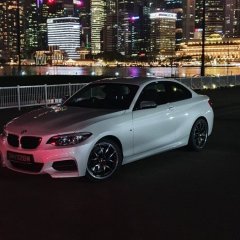









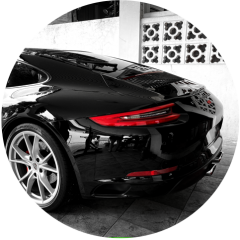

.thumb.jpg.ad73b21bc806c02745605b2692ee1992.jpg)
.thumb.jpg.b76697e1e9aafc2f5f69d8693b27c7bd.jpg)
.thumb.jpg.9fdf6686149cbdc365def5c944f48af0.jpg)
.thumb.jpg.f2a168e40703a5ec633afbe3c8a25247.jpg)
.thumb.jpg.d08dff83d9ca3a9676f6455f0320f6fe.jpg)
